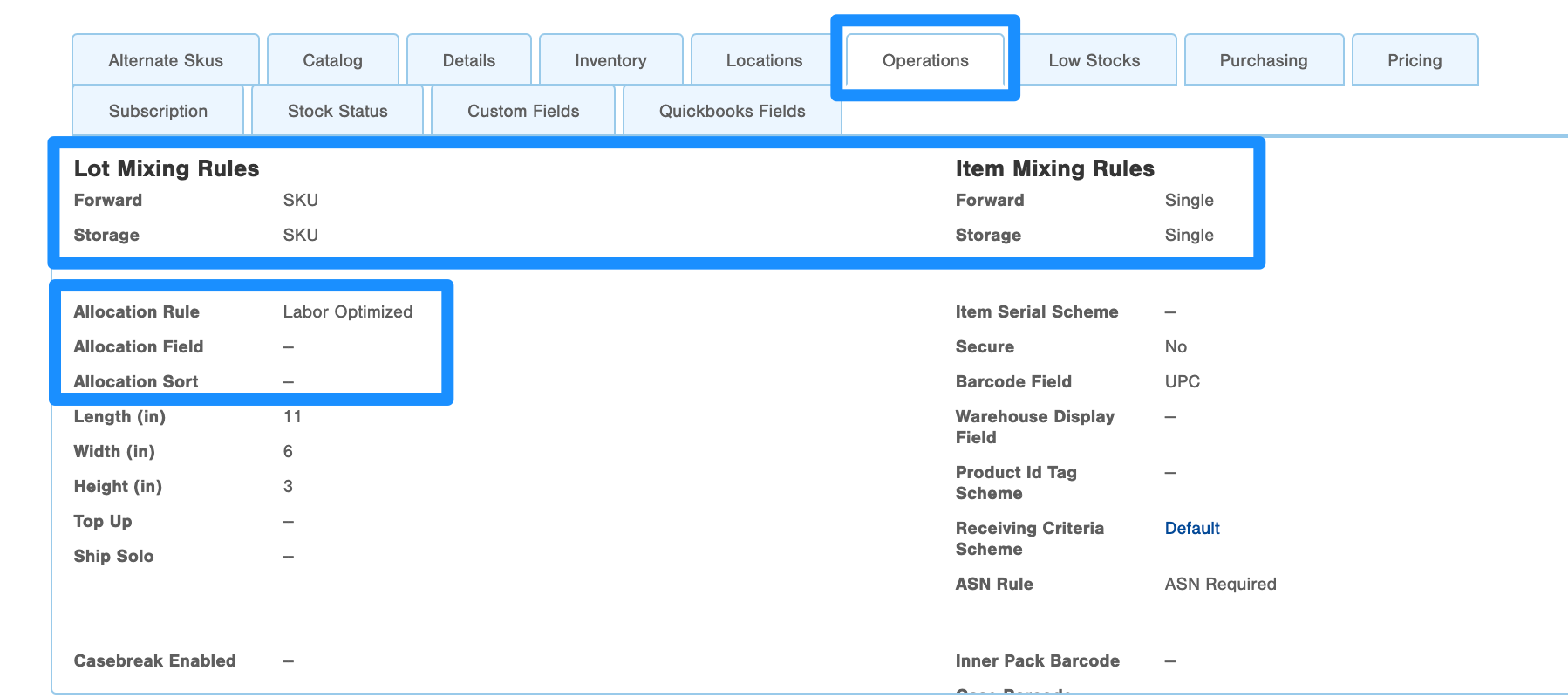Overview of Allocation Rules
Allocation Rules, set via an item record, control how Infoplus chooses where to allocate inventory from when fulfilling orders.
To ensure the proper rotation of items in your warehouse, select appropriate Allocation Rules. The Allocation Rule controls how Infoplus chooses where to allocate inventory from when fulfilling orders.
The Allocation Rule is set in the Item record. Here's an example:

Allocation Rules
You can allocate inventory based on:
- Strict: Always allocate from the oldest available PO lot first (requires selection of Item Receipt as the Lot Mixing Rule).
- Weak: Allocate from the oldest available PO lot first, but allow PO lots to be mixed in Forward Locations (allows you to select different Lot Mixing Rules for Forward Locations).
- Labor Optimized: Allocate from the optimal location for minimizing labor (allows a wider selection of Lot Mixing Rules).
-
Allocation Field - Is the field you choose to drive allocation from the Item Receipt:Distribution DateReceiving DateExpiration DateOrder DateProduction LotProduct ID TagRevision
-
Allocation Sort - is how you choose the sort of the allocation field on the Item Receipt. You can choose if you want to allocate based on descending or ascending order.
How Allocation Rules and Lot Mixing Rules Work Together
To accommodate Strict or Weak Allocation Rules, you must select Item Receipt as the Lot Mixing Rule for Storage Locations. This is the only way that the PO lot can be confirmed when allocating inventory from a location.
The difference between Strict and Weak Allocation Rules is that the Weak rule allows "weaker" Lot Mixing in Forward Locations. With Weak, Items in Storage Locations must still only be mixed with items from the same Item Receipt (to allow FIFO), but Items in Forward Locations can be mixed with items based on weaker rules (Inventory Properties or SKU). The Weak FIFO rule is often used when the PO Lot connection is not required in Forward Locations.
Here's a use case example for Weak: If you sell batteries, you want to make sure that older inventory is used up before newer inventory (e.g. so you don't leave old batteries on the shelf for years, draining their life). Use a Storage Location Lot Mixing Rule of Item Receipt. But there is no need to track the specific Inventory Lot when an item is shipped with an order. So you can use a weaker Forward Location Lot Mixing Rule of Inventory Properties or SKU.
Here is a table showing the allowable combinations of Allocation Rules and Lot Mixing Rules:
| Allocation Rule | Storage Location Mixing Rule | Forward Location Mixing Rule |
| Strict | Item Receipt | Item Receipt |
| Weak | Item Receipt | Item Receipt |
| Item Receipt | Inventory Properties | |
| Item Receipt | SKU | |
| Labor Optimized | Item Receipt | Item Receipt |
| Item Receipt | Inventory Properties | |
| Item Receipt | SKU | |
| Inventory Properties | Inventory Properties | |
| Inventory Properties | SKU | |
| SKU | SKU |
